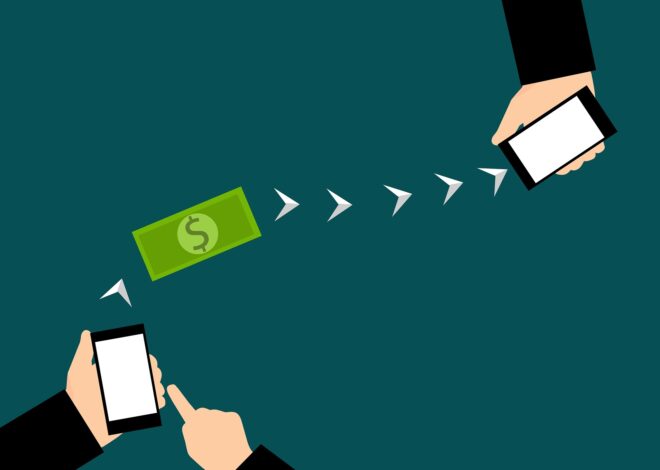
Understanding the Basics: A Beginner’s Guide to Banking
Introduction to Banking
Banking, in its simplest form, is the system of managing money. It involves holding money, transferring it to other accounts, lending it out, and providing various financial services. The concept of banking has been around for centuries, evolving from simple moneylenders and goldsmiths to the complex network of financial institutions we see today.
Banks play a crucial role in the economy, acting as intermediaries between those who have money (depositors) and those who need money (borrowers). They provide a safe place for individuals and businesses to store their money, offer interest on deposits, and make loans to help stimulate economic growth.
There are several types of banks, including commercial banks, investment banks, savings and loan associations, and credit unions. Each type of bank serves a specific purpose and caters to different needs. However, the primary function of all banks is to accept deposits and provide loans.
Banks operate under a system known as fractional reserve banking. This means that banks only keep a fraction of their deposits as reserves and lend out the rest. The money lent out is then deposited back into the banking system, creating new money in the process. This system allows banks to facilitate economic activity and growth.
In addition to their economic functions, banks also offer a variety of services to their customers. These services include checking and savings accounts, credit and debit cards, mortgages, personal loans, and more. Many banks also offer online and mobile banking services, allowing customers to manage their finances from anywhere at any time.
Understanding the basics of banking is essential for managing personal finances and making informed financial decisions. The following sections will delve deeper into the different aspects of banking, providing a comprehensive guide for beginners.

Types of Bank Accounts
Bank accounts are fundamental tools for managing money. They provide a safe place to store money and offer various features for making transactions. There are several types of bank accounts, each designed to cater to different financial needs and goals. Here are the most common types:
- Checking Accounts: These are primary transactional accounts used for everyday expenses. They allow unlimited deposits and withdrawals. Most checking accounts come with check-writing privileges, debit cards, and online banking services for easy access to funds.
- Savings Accounts: These accounts are designed for saving money over the long term. They typically offer higher interest rates than checking accounts, helping your money grow over time. However, they may limit the number of withdrawals you can make each month.
- Money Market Accounts: These are a hybrid of checking and savings accounts. They typically offer higher interest rates like a savings account but also provide check-writing privileges and a debit card like a checking account. They usually require a higher minimum balance.
- Certificates of Deposit (CDs): CDs are time-bound deposit accounts that offer a fixed interest rate. You agree to leave your money in the bank for a set period (the term), and in return, the bank pays interest. If you withdraw your money before the term ends, you’ll likely pay a penalty.
- Retirement Accounts (IRAs): These are special types of savings accounts for retirement savings. They come in different types, including Traditional IRAs, Roth IRAs, and SEP IRAs. These accounts offer tax advantages but have rules about contributions and withdrawals.
- Business Accounts: These accounts are for business owners. They separate personal assets from business assets, making it easier to track business expenses and prepare for taxes.
Each type of bank account has its own advantages and is suited to different purposes. It’s important to understand these differences when deciding which type of account to open.

Understanding Banking Transactions
Banking transactions refer to the various operations you can perform with your bank account. These transactions allow you to manage your money, make payments, receive funds, and more. Here are some common types of banking transactions:
- Deposits: This is when you add money to your bank account. Deposits can be made in several ways, including direct deposit (where your employer transfers your salary directly to your bank account), ATM deposits, mobile check deposits, or in-person deposits at a bank branch.
- Withdrawals: This is when you take money out of your bank account. You can do this by using an ATM, writing a check, or making a purchase with your debit card.
- Transfers: This involves moving money from one account to another. You might transfer money between your own accounts (such as from your checking account to your savings account), or you might transfer money to someone else’s account.
- Payments: This is when you use money in your account to pay for goods or services. Payments can be made using a debit card, credit card, electronic funds transfer, or online payment services.
- Direct Debits: This is when you authorize a company or organization to take money from your account on a regular basis. This is commonly used for recurring payments like utility bills or loan repayments.
- Checks: This is a written order to your bank to pay a specific amount of money from your account to another person or organization.
- Online and Mobile Transactions: With the advent of digital banking, you can now perform most banking transactions online or through a mobile app. This includes checking your balance, making transfers, paying bills, and depositing checks.
Each of these transactions plays a crucial role in managing your finances. Understanding how they work can help you use your bank account more effectively and avoid any potential fees or charges.
Banking Fees and Charges
Banks provide a wide range of services, and many of these services come with associated fees and charges. It’s important to understand these costs as they can significantly impact your overall banking experience. Here are some common banking fees and charges:
- Monthly Maintenance Fees: Many banks charge a monthly fee for maintaining your account. However, these fees can often be waived if you meet certain criteria, such as maintaining a minimum balance or setting up direct deposit.
- Overdraft Fees: If you spend more money than you have in your account, you may incur an overdraft fee. Some banks offer overdraft protection services to help you avoid these fees.
- ATM Fees: Banks often charge fees for using an ATM that doesn’t belong to their network. Additionally, the owner of the ATM may also charge a separate fee.
- Minimum Balance Fees: Some accounts require you to maintain a minimum balance. If your balance falls below this minimum, you may be charged a fee.
- Returned Check Fees: If you write a check and it bounces due to insufficient funds in your account, you may be charged a returned check fee.
- Wire Transfer Fees: Sending or receiving money via wire transfer often comes with a fee. This fee can vary depending on the amount of money being transferred and whether the transfer is domestic or international.
- Foreign Transaction Fees: If you use your debit or credit card abroad, you may be charged a foreign transaction fee. This is usually a percentage of the amount of the transaction.
- Early Account Closure Fees: Some banks charge a fee if you close your account within a certain period after opening it.
Understanding these fees and charges can help you choose the right bank and account type for your needs. It can also help you manage your account effectively to minimize costs.
Online and Mobile Banking
Online and mobile banking are convenient ways to access and manage your bank account using the internet. You can use online and mobile banking to perform various banking transactions, such as:
- Checking your account balance and transaction history
- Transferring money between your accounts or to other people
- Paying bills and setting up recurring payments
- Depositing checks by taking a photo of them
- Applying for loans, credit cards, or other products
- Managing your budget and savings goals
- Getting alerts and notifications about your account activity
- Contacting customer service or finding a branch or ATM near you
To use online and mobile banking, you need to register for the service with your bank and create a username and password. You also need a device that can connect to the internet, such as a computer, smartphone, or tablet. You can access online banking through your bank’s website or mobile banking through your bank’s app. Some banks may also offer other ways to access your account, such as text messaging, voice assistants, or smart watches.
Online and mobile banking offer many benefits, such as:
- Saving time and money by avoiding trips to the branch or ATM
- Having more control and flexibility over your finances
- Accessing your account anytime and anywhere
- Reducing paper clutter and environmental impact
- Enjoying enhanced security and fraud protection
However, online and mobile banking also have some risks and challenges, such as:
- Facing technical issues or service interruptions
- Losing or forgetting your login credentials or device
- Falling victim to phishing, malware, or identity theft
- Having limited access to some features or services
- Incurring fees or charges for using certain functions or networks
Therefore, it is important to use online and mobile banking responsibly and securely. Here are some tips to help you do that:
- Choose a strong and unique password and change it regularly
- Protect your device with a lock screen, antivirus software, and encryption
- Avoid using public or unsecured Wi-Fi networks or devices
- Log out of your account and close your browser or app when you are done
- Monitor your account activity and report any suspicious or unauthorized transactions
- Never share your login credentials or personal information with anyone
- Beware of fake emails, calls, or texts that ask you to verify your account or provide sensitive information
- Update your contact information and preferences with your bank
- Review your bank’s terms and conditions, privacy policy, and fee schedule
Online and mobile banking are powerful tools that can help you manage your money more efficiently and effectively. By following these guidelines, you can enjoy the convenience and benefits of online and mobile banking while minimizing the risks and challenges.
Securing Your Bank Account
Your bank account is a valuable asset that you need to protect from unauthorized access, fraud, and theft. There are many ways that criminals can try to compromise your bank account, such as:
- Stealing your debit or credit card, checkbook, or bank statements
- Skimming your card information at ATMs or point-of-sale terminals
- Hacking into your online or mobile banking account
- Sending you phishing emails, calls, or texts that ask you to verify your account or provide sensitive information
- Creating fake websites or apps that mimic your bank’s
- Using your identity or personal information to open new accounts or apply for loans or credit cards in your name
Therefore, it is important to take proactive steps to secure your bank account and prevent potential losses. Here are some tips to help you do that:
- Choose a reputable bank that offers strong security features and fraud protection
- Review your bank’s terms and conditions, privacy policy, and fee schedule
- Sign up for alerts and notifications from your bank about your account activity and balance
- Check your account statements and transaction history regularly and report any errors or discrepancies
- Use a secure password and PIN for your online and mobile banking account and card and change them regularly
- Enable two-factor authentication or biometric verification for your online and mobile banking account and card
- Avoid using public or unsecured Wi-Fi networks or devices to access your online or mobile banking account
- Log out of your online or mobile banking account and close your browser or app when you are done
- Shred or destroy any documents that contain your bank account or personal information before disposing of them
- Store your debit or credit card, checkbook, and bank statements in a safe place and do not lend them to anyone
- Cover the keypad when entering your PIN at ATMs or point-of-sale terminals
- Inspect the ATM or point-of-sale terminal for any signs of tampering or skimming devices before using it
- Use only your bank’s official website or app to access your online or mobile banking account and do not click on any links or attachments from unknown or suspicious sources
- Never share your password, PIN, card number, account number, or personal information with anyone, even if they claim to be from your bank or a trusted organization
- Beware of unsolicited or too-good-to-be-true offers or requests that ask you to provide your bank account or personal information or to send or receive money
- Monitor your credit report and score regularly and report any unauthorized or fraudulent accounts or inquiries
- Contact your bank immediately if you notice any suspicious or unauthorized transactions, if you lose or misplace your card or checkbook, or if you suspect that your online or mobile banking account or card has been compromised
Securing your bank account is a shared responsibility between you and your bank. By following these guidelines, you can reduce the risk of becoming a victim of bank account fraud and theft and enjoy the peace of mind that comes with having a safe and secure bank account.








